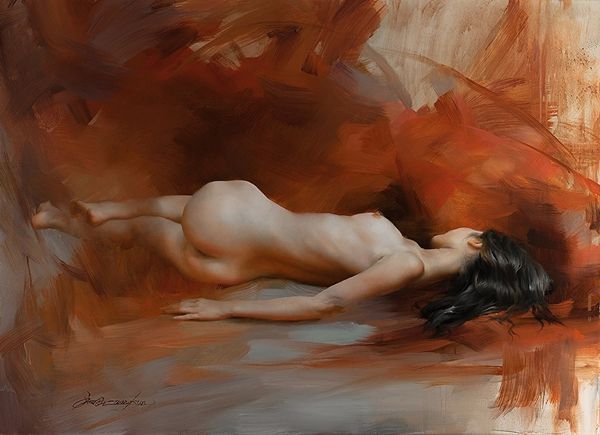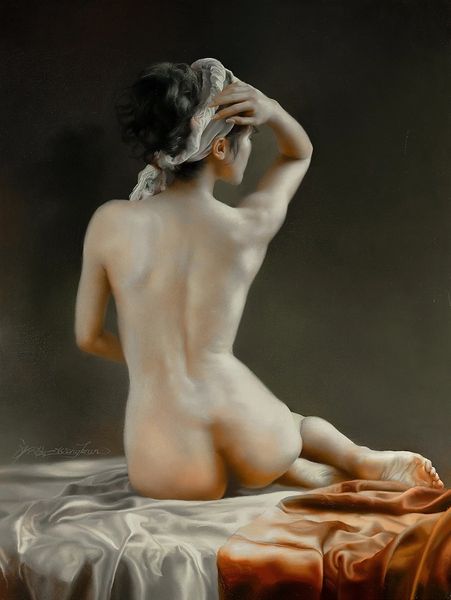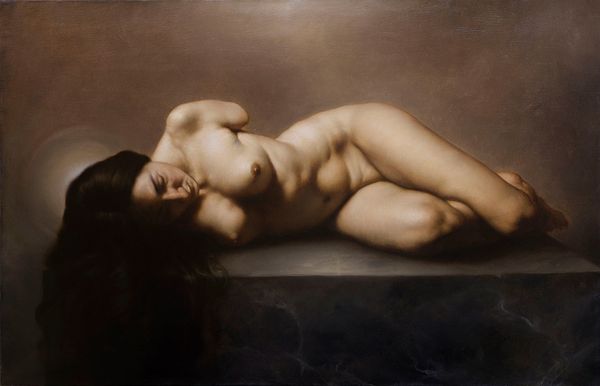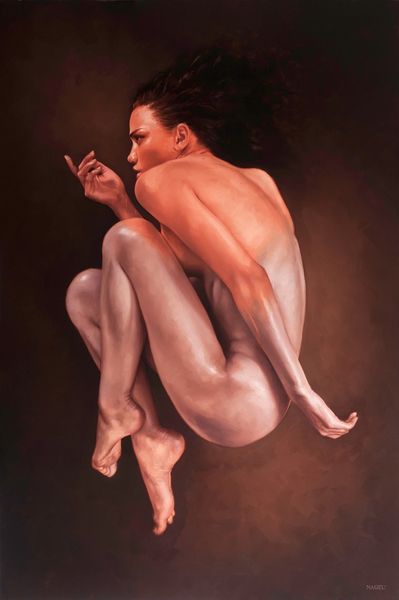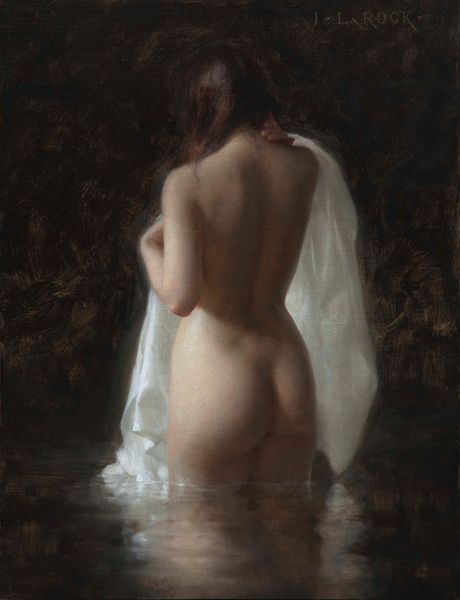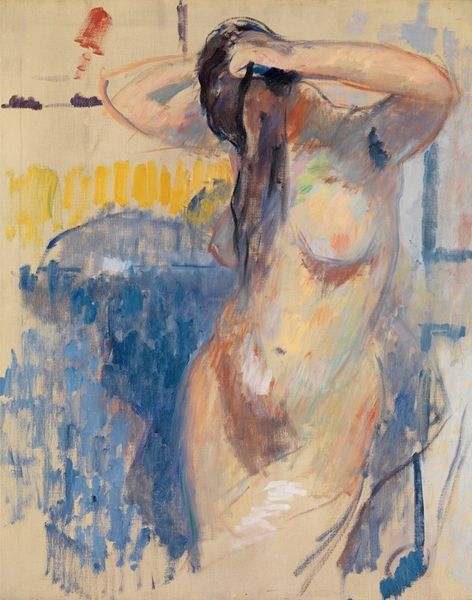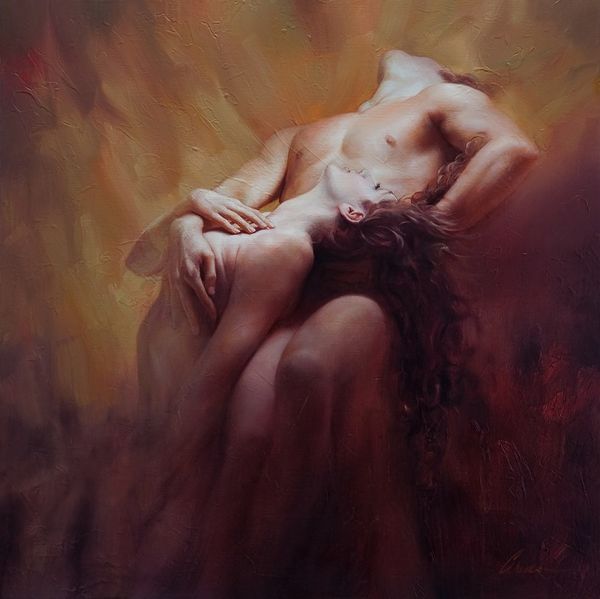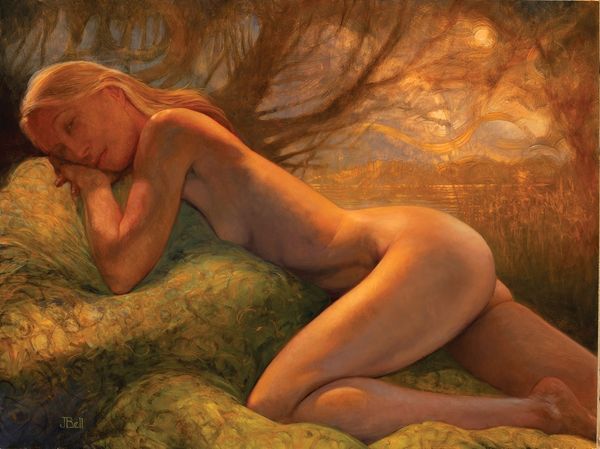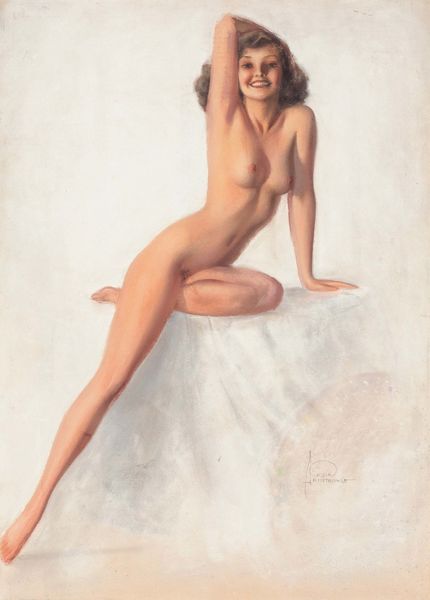
painting, oil-paint, impasto
#
figurative
#
painting
#
oil-paint
#
figuration
#
impasto
#
nude
#
realism
Copyright: Modern Artists: Artvee
Curator: Just looking at this work titled "Peaceful Night" by Kun Wang, there's a strong sense of solitude. Editor: It’s the impasto for me; those thick, visible brushstrokes give the figure a tangible, almost sculpted quality, merging her form with the canvas itself. What's the social implication of displaying this subject? Curator: Well, considering its oil on canvas, we might examine it alongside the history of portraiture and figure painting. Wang's use of oil allows for that incredible depth and the way the figure seems to emerge from the ground. It raises the question, whose gaze are we invited to share, and under what conditions was this work made and intended for consumption? Editor: The subdued palette is compelling. Soft creams and browns give a classical, almost academic feel to the composition, and, yet, something is quite subversive within the image itself, even through these more realistic techniques. What do you suppose those techniques, those visual structures, convey in terms of art history and current reception? Curator: It appears that we’re grappling with dualities – privacy and exposure, individual rest, but viewed by external consumers. Wang presents a contemporary nude that invites speculation about the individual's moment versus the larger culture surrounding depictions of the human figure. Editor: True. It certainly asks the viewer to reconsider assumptions. Curator: It’s through the intimate realism and attention to detail that Wang subtly redirects our perceptions, and maybe encourages us to contemplate the labor involved in creating a painted object. Editor: Ultimately, whether through close formal reading or a wider look at its art world context, this “Peaceful Night” creates such an enriching moment to consider the visual choices artists and viewers participate in to create culture.
Comments
No comments
Be the first to comment and join the conversation on the ultimate creative platform.
